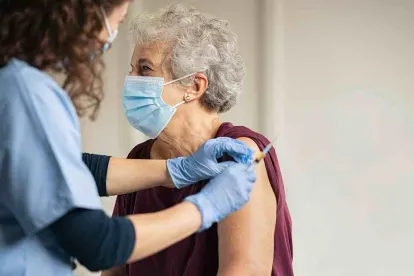This week, the Centers for Disease Control and Prevention (CDC) issued its first set of recommendations for fully vaccinated people. Significantly, the recommendations are interim only, and will continue to be updated and expanded by the CDC based on the level of community spread, proportion of the U.S. population fully vaccinated, and emerging scientific understanding of the vaccines.
In this welcome guidance, the CDC acknowledged evidence suggesting fully vaccinated individuals are “less likely to have asymptomatic infection and potentially less likely to transmit” the virus to others, and that the benefits of reducing social isolation and relaxing some quarantine measures for fully vaccinated individuals may outweigh the residual risk of passing on COVID-19 or becoming ill.
An individual is considered “fully vaccinated” two weeks after they have either received the second dose of the 2-dose series of the Pfizer or Moderna vaccine or two weeks after they have received the single-dose Johnson and Johnson vaccine.
Per the CDC, fully vaccinated individuals in a non-healthcare setting:
- Can visit with other fully vaccinated individuals indoors and in private settings without wearing masks or physical distancing; and,
- Can visit with unvaccinated individuals from a single household at low risk for severe COVID-19 disease indoors without wearing masks or physical distancing; and,
- Need not quarantine and test after a known exposure so long as he or she remains asymptomatic.
However, the CDC states that fully vaccinated people should not visit with others or attend a gathering if they have tested positive for COVID-19 in the prior 10 days or are experiencing COVID-19 symptoms, regardless of the vaccination status of other people at the gathering.
As for fully vaccinated employees that work in non-healthcare congregate settings (such as correctional and detention facilities and group homes) and other high-density workplaces (such as meat and poultry processing and manufacturing plants), the CDC said they need not quarantine after an exposure so long as no symptoms present. However, for this group the CDC still recommends testing following an exposure and continued compliance with any routine workplace screening programs in place. Significantly, the CDC explained that the agency is still learning how long the COVID-19 vaccine may protect someone and how well vaccines protect against emerging variants.
Fully vaccinated individuals should continue preventive measures like masking and physical distancing when visiting with unvaccinated individuals who are at increased risk for severe COVID-19 or who have an unvaccinated household member at increased risk for severe COVID-19. In addition, the CDC recommends a fully vaccinated individual get a COVID-19 test if he or she experiences COVID-19 symptoms.
Further, the CDC advised fully vaccinated individuals should continue to wear well-fitted masks, maintain physical distance from others while in public or visiting with unvaccinated people from multiple households and avoid poorly ventilated spaces and medium- and large-sized in-person gatherings. The CDC also said that vaccinated people should follow CDC and health department travel requirements and recommendation and follow guidance issued by individual employers.
What does this mean for employers? The CDC’s pronouncement that so long as they experience no symptoms, fully vaccinated employees do not need to quarantine after COVID-19 exposure is good news indeed and may significantly alleviate concerns over staffing. But employers may also begin to face increasing pressure from vaccinated employees to relax workplace protocols such as mask mandates. For the time being, it may be best to tread cautiously when responding to such requests.
Keep in mind that the CDC’s guidance does not override any existing state and local requirements. Many states have already issued modified orders and standards that relax post-exposure quarantine requirements for those who are vaccinated or that even rescind mask mandates. But other states have yet to take action. In addition, the federal Occupational Safety and Health Administration (OSHA) guidance directs employers to require masks in the workplace, and employers around the country are waiting to see whether OSHA will issue a COVID-19 emergency temporary standard in the next few days. If issued, this standard may or may not address masks in the workplace or incorporate the CDC’s recommendations. Some OSHA state plans already have COVID-19 Emergency Temporary Standards that require masks in the workplace irrespective of vaccines and may have specific rules regarding quarantine also irrespective of vaccines and which may also differ from CDC guidance. Employers should make sure to check any OSHA rules specific to their states and consult with counsel before changing any workplace requirements.
Given the rapidly changing health and regulatory environment, we expect this guidance to continue to evolve. Employers may want to hold off for now on modifying their existing COVID-19 workplace safety policies.






 />i
/>i
